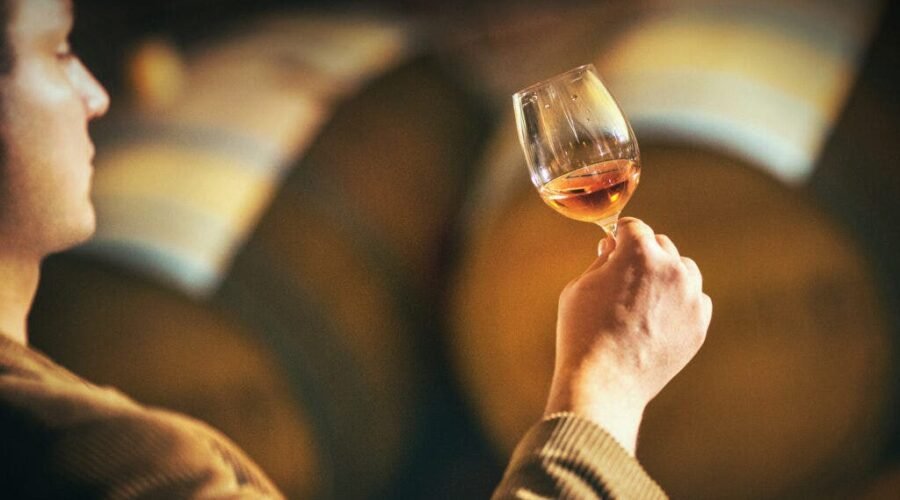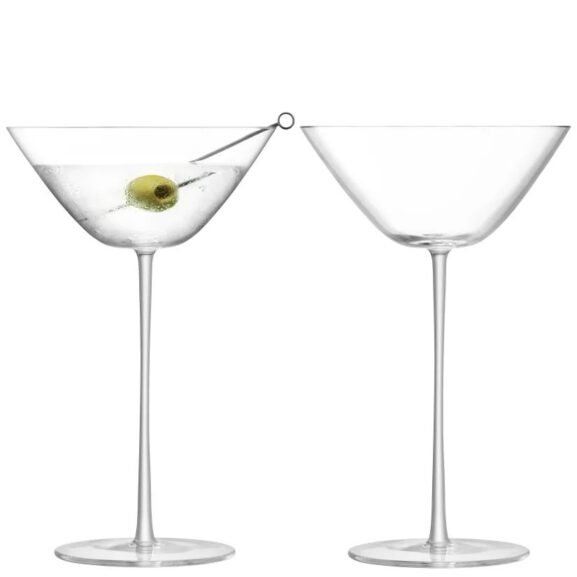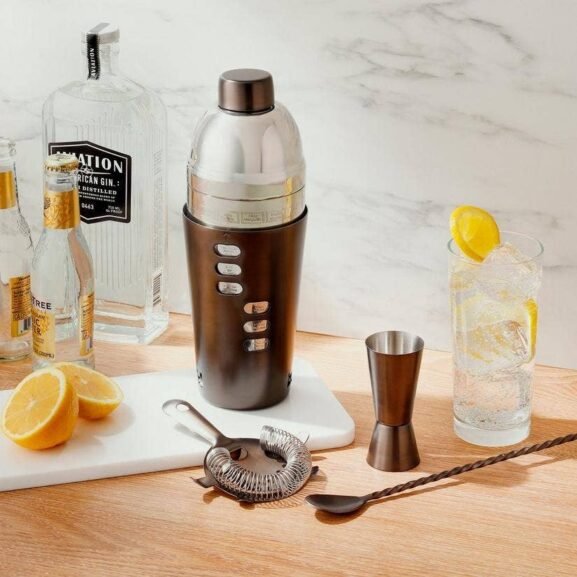Every Rosé Lover Needs to Know These Basics
Rosé is a wine with surprising nuance that encompasses impressive traditions in some of Europe’s greatest appellations. Its meteoric rise in popularity in recent decades created full sections of retail stores and wine lists devoted to pink-hued wine across the globe. And, while the “how it’s made” might not be as simple of an explanation as what it might be for white or red wine, the basics of rosé aren’t as intimidating as you might think.
Here’s a breakdown of the main variations of rosé, from the stylistic influence of different harvest and production techniques to a deep-dive into the classic regions in which it’s made.
Rosé 101
Some believe that all rosé is a blend of white and red wine, but most bottles are either the result of maceration or use of the “saignée” method. Blending red wine into white is only common in rosé Champagne. Another misconception left over from America’s white Zinfandel era is that rosé is off-dry or even sweet. Most quality-driven European rosés are dry, as are offerings from an increasing number of New World producers.
Rosé-Making Techniques
Skin Contact
Ever heard the phrase “intentional rosé”? It refers to grapes grown and harvested explicitly to make rosé wine, rather than using leftover grapes from the production of other wine. Grapes are generally harvested early to preserve their acidity and bright fruit flavors, followed by a limited maceration.

The maceration process is the same that winemakers follow for red wine, where they crush grapes and allow the juice time on the skins. Compared to red wine production, rosé’s maceration period is far quicker, ranging from a few hours to a week—the shorter the period, the lighter the color. After maceration, the wine is fermented to full dryness.
Direct press is a variation that helps make very pale rosés from darker skinned berries, though the style is more akin to white winemaking than red. Rather than allow for a maceration period, the grapes are pressed slowly and the juice is immediately drawn off the skins. As the skins break during pressing, they impart a hint of color and flavor to the juice. This method yields a delicate rosé, one that’s lighter in hue and favors citrus flavors over heavy red fruits.
Saignée
From the French for “to bleed,” saignée is generally a byproduct of red winemaking, rather than an intentionally made rosé wine. This technique is common in regions where winemakers seek to produce concentrated, bold reds with big flavor.
To produce a saignée rosé, winemakers will “bleed” off, or remove, a portion of the juice from a tank of crushed red grapes. What remains in the tank is destined to become red wine, and since it now has a higher juice-to-skin ratio, the resulting wine brings added concentration, color and tannin. The lighter juice that had been bled off is vinified separately into rosé.
// Create the element
var script_6866d0df2365a = document.createElement(“script”);
script_6866d0df2365a.innerHTML = `
window.googletag = window.googletag || {cmd: []};
googletag.cmd.push(function() {
var adType = “leaderboard”;
var mapping;
var lbmapping = googletag.sizeMapping()
.addSize([1024, 0], [[970, 250], [970, 90], [1, 1], [728, 90]])
.addSize([728, 0], [[728, 90], [1, 1]])
.addSize([320, 0], [[1, 1], [300, 50], [300, 100], [320, 50], [320, 100]])
.addSize([0, 0], [[1, 1], [320, 50]])
.build();; // Size mapping for leaderboard ads
var medrecmapping = googletag.sizeMapping()
.addSize([1024, 0], [[300, 600],[300, 250]])
.addSize([728, 0], [300, 250])
.addSize([320, 0], [[1, 1],[300, 250]])
.addSize([0, 0], [[1, 1], [300, 250]])
.build(); // Size mapping for med rectengle ads
if(‘39808611/article_page/article_leaderboard_1’ == ‘/39808611/article_page/article_leaderboard_1’
|| ‘39808611/article_page/article_leaderboard_1’ == ‘/39808611/article_page/article_leaderboard_2’
|| ‘39808611/article_page/article_leaderboard_1’ == ‘/39808611/article_page/article_leaderboard_3’) {
mapping = googletag.sizeMapping()
.addSize([1920, 0], [[728, 90]]) // >= 1920px
.addSize([1440, 0], [[728, 90]]) // 1440px-1919px
.addSize([730, 0], [[300, 250]]) // 730px-1439px
.addSize([0, 0], [[320, 100], [320, 50], [300, 100], [300, 50], [300, 250]]) // Up to 729px
.build();
} else {
mapping = adType == ‘leaderboard’ ? lbmapping : medrecmapping;
}
googletag.defineSlot(‘39808611/article_page/article_leaderboard_1’, [],
‘div-gpt-ad-6866d0df2365a’).addService(googletag.pubads()).defineSizeMapping(mapping);
googletag.pubads().enableSingleRequest();
googletag.pubads().collapseEmptyDivs();
googletag.display(‘div-gpt-ad-6866d0df2365a’);
});
`;
// Append the script to the body
document.body.appendChild(script_6866d0df2365a);
Blends
Except for, perhaps, during the late stages of a raucous party, fine wine producers typically don’t blend red and white wine to make rosé. However, in Champagne, this seemingly unorthodox practice plays an integral role in the production of world-class sparklers.

To make rosé Champagne, producers can either employ maceration techniques, allowing unfermented grape juices a short period of contact with their skins, use the saignée method or make what’s called “rosé d’assemblage.” For the latter, still white and red wines are blended before secondary fermentation is allowed to occur. In Champagne, Pinot Noir or Pinot Meunier are added to Chardonnay wine to lend color and flavor.
Outside of Europe, a few New World producers might blend white and red, but it’s not the norm for quality wine production.
How Rosé Is Made Around the World
France

Provence
If you’ve sipped a glass of rosé, you’ve probably tasted one from Provence. Locals in the South of France view rosé as not just a beverage, but a way of life. And beyond French borders? Provence’s success is largely responsible for the creation of the U.S.’s own rosé market.
Typically, these rosés are made intentionally—to widespread fanfare across the globe. “About 90% of Provence’s wine exports are rosés,” says Wine Enthusiast Tasting Manager Cody Wexler, who reviews wines from the French region. “People often have misconceptions about rosé as being cheaply made or unserious, but I think this shows just how intentional Provence and its producers are about making it.”
Stylistically, Provençal rosé is quite distinct. The grapes are intentionally picked and either direct-pressed or macerated, limiting skin contact and giving the wine a lighter hue and delicate citrus and tart red fruit flavors. They’re meant to be crisp and versatile and can be enjoyed with vegetables, seafood and even lighter meats.
The classic Provençal rosé blends include red grapes like Grenache, Cinsault, Mourvèdre and Syrah, which can also be accented with white grape additions like Vermentino, known locally as Rolle.
Bandol
Bandol rosés are known for their ability to age beautifully over time. These wines are made from predominantly direct-pressed Mourvèdre, giving them a savory, mineral-driven and structured profile, rather than simple and fruit-forward. Whereas it’s fairly uncommon in many rosé-producing regions, rosés from the Bandol region do spend time in oak on occasion.
Rhône Valley
Though Provence may be better-known in the U.S., the Rhône Valley’s Tavel region is the only appellation in France that is solely dedicated to making dry rosé. The primary grape used in Tavel is Grenache, though Cinsault, Bourboulenc, Clairette, Mourvèdre, Picpoul (Blanc, Noir and Gris) and Syrah are also permitted.
Due to a longer period of skin contact, Tavel wines boast higher tannins, richer color and deeper red fruit flavors than many other rosés. These bottlings can be incredibly age-worthy, especially those from top producers.
// Create the element
var script_6866d0df24353 = document.createElement(“script”);
script_6866d0df24353.innerHTML = `
window.googletag = window.googletag || {cmd: []};
googletag.cmd.push(function() {
var adType = “leaderboard”;
var mapping;
var lbmapping = googletag.sizeMapping()
.addSize([1024, 0], [[970, 250], [970, 90], [1, 1], [728, 90]])
.addSize([728, 0], [[728, 90], [1, 1]])
.addSize([320, 0], [[1, 1], [300, 50], [300, 100], [320, 50], [320, 100]])
.addSize([0, 0], [[1, 1], [320, 50]])
.build();; // Size mapping for leaderboard ads
var medrecmapping = googletag.sizeMapping()
.addSize([1024, 0], [[300, 600],[300, 250]])
.addSize([728, 0], [300, 250])
.addSize([320, 0], [[1, 1],[300, 250]])
.addSize([0, 0], [[1, 1], [300, 250]])
.build(); // Size mapping for med rectengle ads
if(‘/39808611/article_page/article_leaderboard_2’ == ‘/39808611/article_page/article_leaderboard_1’
|| ‘/39808611/article_page/article_leaderboard_2’ == ‘/39808611/article_page/article_leaderboard_2’
|| ‘/39808611/article_page/article_leaderboard_2’ == ‘/39808611/article_page/article_leaderboard_3’) {
mapping = googletag.sizeMapping()
.addSize([1920, 0], [[728, 90]]) // >= 1920px
.addSize([1440, 0], [[728, 90]]) // 1440px-1919px
.addSize([730, 0], [[300, 250]]) // 730px-1439px
.addSize([0, 0], [[320, 100], [320, 50], [300, 100], [300, 50], [300, 250]]) // Up to 729px
.build();
} else {
mapping = adType == ‘leaderboard’ ? lbmapping : medrecmapping;
}
googletag.defineSlot(‘/39808611/article_page/article_leaderboard_2’, [],
‘div-gpt-ad-6866d0df24353’).addService(googletag.pubads()).defineSizeMapping(mapping);
googletag.pubads().enableSingleRequest();
googletag.pubads().collapseEmptyDivs();
googletag.display(‘div-gpt-ad-6866d0df24353’);
});
`;
// Append the script to the body
document.body.appendChild(script_6866d0df24353);
Loire Valley
Mostly made with Cabernet Franc, the best Loire Valley rosés weave delicate herbal notes with juicy red fruit flavors through both maceration and saignée. Though Cab Franc commands most of the attention, Sancerre rosé made from Pinot Noir is another growing category. Spanning a wide range of styles, Loire Valley offers options from “good weekday” bottles to “serious, mature” rosés.
Languedoc
Rosé wines from the Languedoc are renowned for their versatility. Since Languedoc-Roussillon is the world’s largest wine region, winemakers are able to showcase different parts of the terroir, resulting in many different expressions of rosé.
The blends here are generally similar to those in Provence and the Rhône Valley, with Grenache, Syrah, Cinsault and Mourvèdre all being frequent ingredients. From lightly macerated, pale wines to heavier, more complex rosés made using the saignée method, to even Crémant de Limoux sparkling rosé, Languedoc wines are endlessly intriguing and ideal for pairing with a wide variety of dishes.
Spanish Rosados

Spaniards have enjoyed rosé for ages, locally referred to as rosado, but only in recent years have those bottles gained popularity outside of Spain. Traditionally, producers made simple, quaffable wines. But as exports have increased, so has quality.
Navarra
Navarra rosado helped make the region famous. Producers turn out both poolside sippers and more complex, food-appropriate expressions using Tempranillo, Cabernet Sauvignon and Merlot, though rosado from old-vine Grenache is considered the highest expression for the region. In Navarra, usage of the saignée method is common for rosado production.
Rioja
Compared to many red wine regions, aging classifications are far less common in the world of rosé. Most rosé producers tout new vintages for their youthfulness and freshness, aided through the use of stainless steel vessels. But in the case of Rioja, rosado follows the region’s traditional oak-aging hierarchy: joven or otherwise not specified (no aging requirement), crianza (aged for 12 months, with six months in barrel) and reserva (two years with six months in barrel). Here, Grenache and Tempranillo are the primary grapes and, like Navarra, the saignée method is common practice.
Txakoli
Spain’s northern Basque country is home to unusual, indigenous varieties used to produce dry, effervescent Txakoli wine. Though it’s a relatively recent style commercially, it’s becoming easier to find in the U.S. The rosé version relies largely on local red grape Hondarrabi Beltza, and can be made using maceration or the saignée method.
Italian Rosatos

Known as rosato in Italy, rosé is made throughout the country with styles and flavors that depend on local climate and traditional varieties. You’ll find more delicate versions produced in the cooler northeast around Veneto, Friuli-Venezia Giulia and Trentino-Alto Adige. That includes Chiaretto from Lombardy and Veneto. Chiaro means “light” or “pale” and evokes the dry, elegant style of the wine made through the light pressing of native grapes like Corvina and Rondinella. Friuli’s Ramato, a worthy rosé alternative that toes the line between orange and pink in color, is based on extended maceration with Pinot Grigio.
Meanwhile, Central Italy’s cherry-colored Cerasuolo d’Abruzzo is quietly growing a worldwide fanbase. Made from direct pressings of the Montepulciano grape, Cerasuolo is actually vinified as a light red wine, but says Wine Enthusiast Writer-at-Large Danielle Callegari, who reviews Italian wines, “is everything you want from a rosé: refreshing and vibrant enough to be an aperitif, a riot of fruit and salt and acid to carry you through poolside snacks or lunch on the beach, enough structure to wash down whatever you throw on the grill for dinner.”
In the South, rosatos are fuller in body and flavor, similar to the region’s food and intense sunshine. Puglia, Sicily and Calabria turn out lots of stellar examples across styles using native grapes like Negroamaro (Puglia) and Nero d’Avola and Frappato (Sicily).
More Rosé Coverage
- Around the world, rosé is leveling up. These top bottles prove that “rosé all day” belongs in the past.
- Sommeliers gave us their tips for pairing steak with rosé—an underappreciated duo.
- Some winemakers are betting big on high-end rosé. Is it actually worth the money?
- Planning a trip to Provence? Here are 10 must-visit wineries.
- We put together a six-bottle rosé master class. You’re welcome.

In the shop
Wine Enthusiast Brilliance! Shatterproof Tritan Universal Outdoor Wine Glasses (Set of 6)
In Stock | $59
The post Every Rosé Lover Needs to Know These Basics appeared first on Wine Enthusiast.


